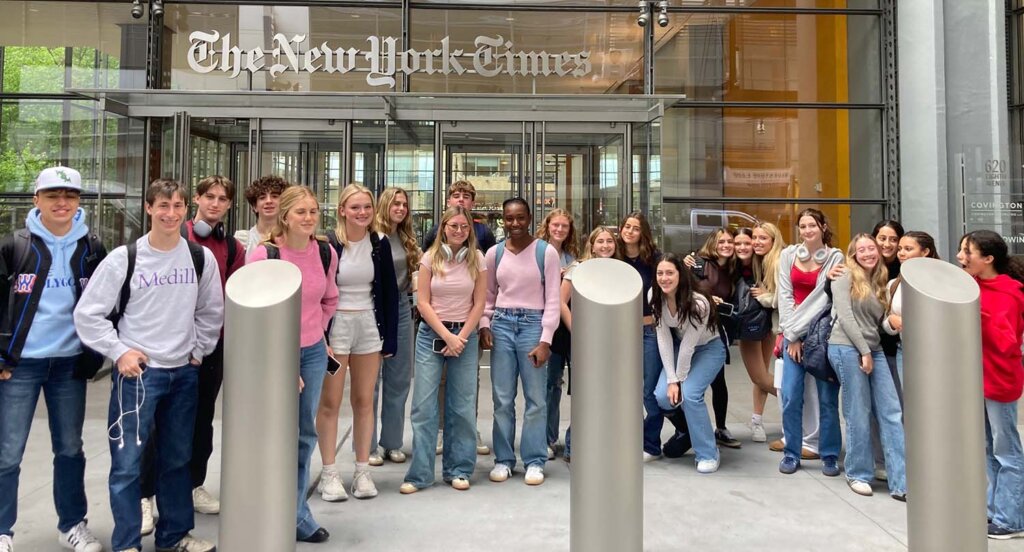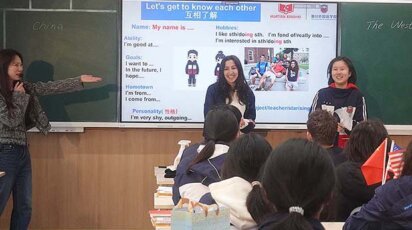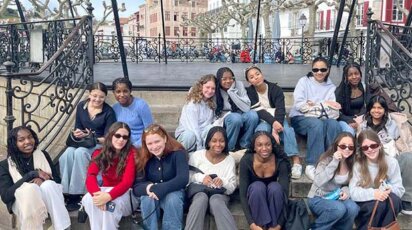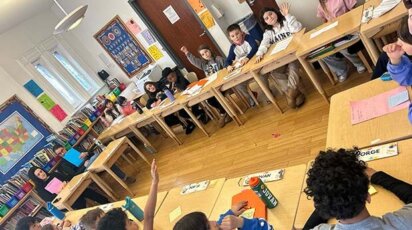News
Journalism Students Focus on Civics During Election Season
Poly students become strong journalists as they gain understanding of the election process and the meaning of civic engagement.
Each year, Poly’s faculty meet students’ eagerness to learn with an expansion of curricula offerings. As students’ observations of the world around them deepens and broadens, faculty and school leaders create a safe space for students to ask questions, responsive to the current political and social climate. Their courses provide students with the resources and opportunities that support critical thinking and curiosity.
In an election year, many students’ desire to learn about civics, the American electoral process, and the 2024 presidential election specifically has grown more urgent, as has faculty’s desire to provide educational programs that support informed and responsible civic engagement. To that end, faculty across divisions have created a variety of programs that promote media and information literacy, civil discourse, and inquiry-based writing. From mock elections at the Lower School, student government at the Middle and Upper School, special election-focused issues of Poly’s student-led newspaper The Polygon, and more, there are many different opportunities for students to be empowered and engaged this election year and beyond.
Journalism and Media Studies Summer SLT
Journalism and Media Studies faculty member Rachael Allen’s Summer 2024 Civics Journalism Service Learning Team (SLT) course was refined from the previous year’s service journalism focus to support election and civics-based learning. “This year, when I thought about running the service journalism program again, [Director of Service Learning and History Teacher] Elijah [Sivin] and I kept talking about the election and the importance of educating students about civics, so much so that I changed the SLT to focus on service journalism stories with a civics/election-angle,” said Allen. “We also had the great opportunity to work with an editor at the New York Times, who was running their own election programming involving high school students.”
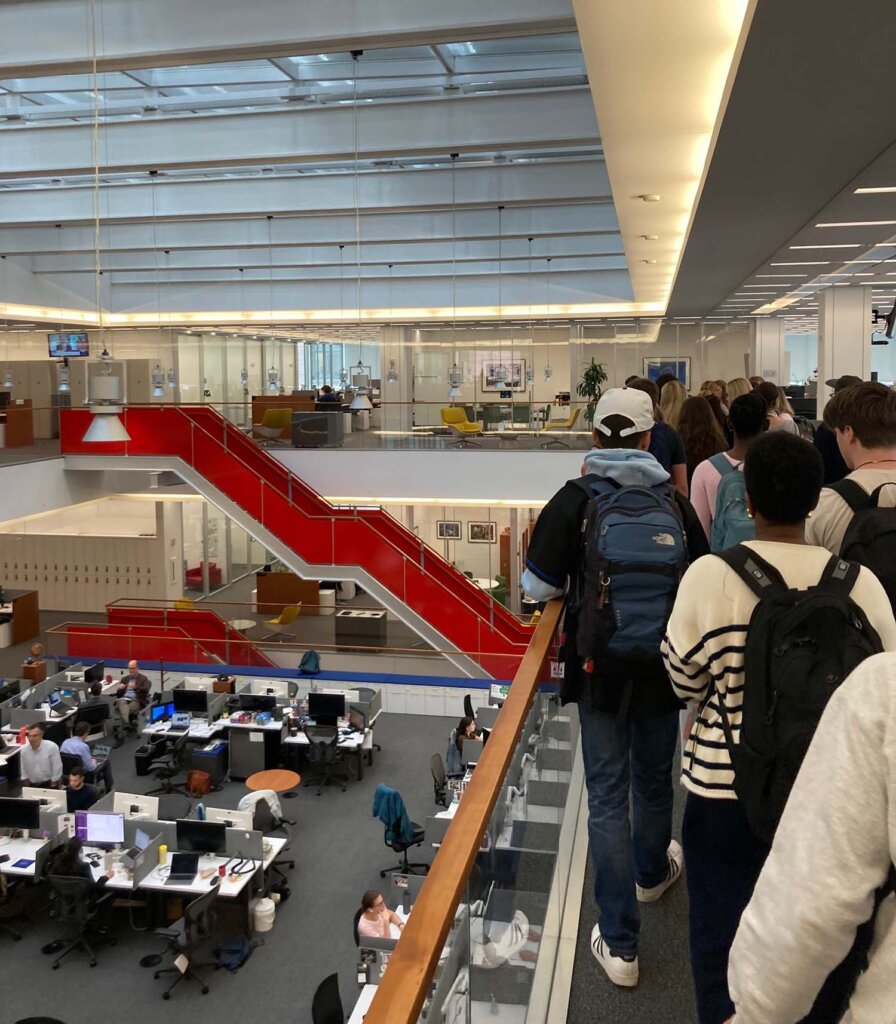
Beginning in May 2024, the SLT set out to address the gaps in understanding that students had about the function of government, the election, and other civics-related issues. Their learning experience consisted of time spent both in classroom discussions and beyond the classroom on field trips. They conducted interviews for their final written assignments—a news or feature story that related to the upcoming election or civics education. Afterwards, the SLT provided student journalists with the opportunity to “pay it forward” and share what they had learned about elections and civics with the community. Their work extended election conversations beyond teacher facilitation, and created a unique and exciting opportunity for discourse in a peer-to-peer exchange. They were asked to consider what stories would be “of service to the Poly community?” and “What stories would help close the information gap?”
Early in the course, the SLT hosted a listening session at the Dyker Heights campus, open to faculty, staff, and fellow students. The listening session, described by Chair of the History Department Virginia Dillon as “a chance for Polygon reporters to better understand what their community knows—and needs to know—about civics and the upcoming election,” was replicated from an earlier listening session that Poly students attended at the New York Times offices in Manhattan.
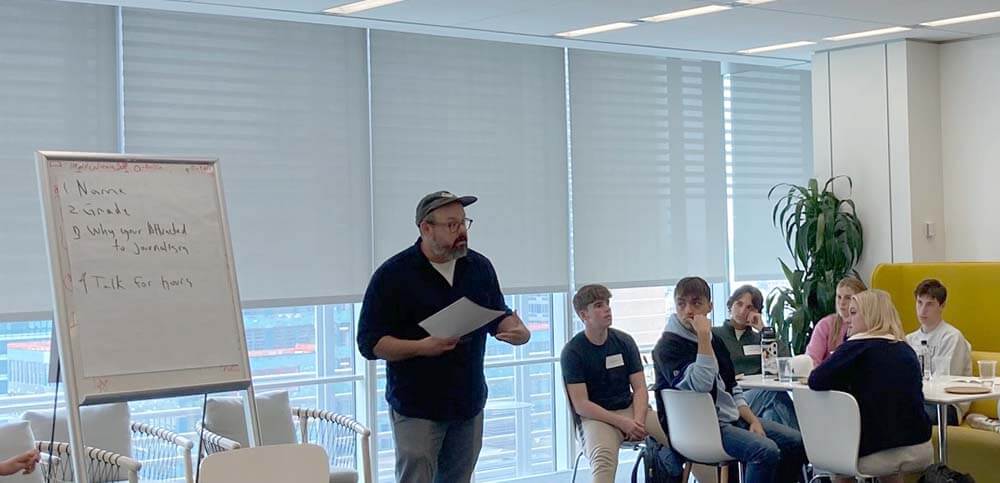
The course began with two sessions in an open discussion about the election and function of government which brought into focus a gap in understanding. “In the civics SLT we spent our first two meetings in May discussing the election and our government and realizing how unknowledgeable we were about civics overall, Lola Carss ‘26 shared. “We then brainstormed ideas for our articles, with support from Ms. Allen to get started. The best part of SLT was the discussions and the opportunity to learn more about civics. This SLT was so important to me because it really brought my attention to the sad reality that most high school students don’t know nearly as much as we need to about civics and our government.”
SLT students wanted to explore a variety of important contemporary issues and trends such as mass polarization in the media, systemic racism, politics within families, mayoral races, and more. Over several months, students created a reporting plan, conducted a series of interviews, and were guided by their faculty advisor to research and craft an original article. Students received an in-depth education on how to structure their writing, check for accuracy in their research, and become stronger journalists.
Journalism Standards and Practices and the Power of a Story Well Told
Students learned the distinct responsibilities of journalists to be the voices of the people, and to engage readers with a balance of factual writing imbued with emotion without veering off into being opinionated. For example, one standard is that their stories have to use historical context, statistics, and more, and to avoid using strong language that hints at the writer’s biases. “The most compelling stories are emotional without being opinionated. They do so by focusing on individual stories. By spotlighting and humanizing people, these stories can offer greater insight into the effectiveness or ineffectiveness of the greater system,” Allen shared with students as a standard for their work.
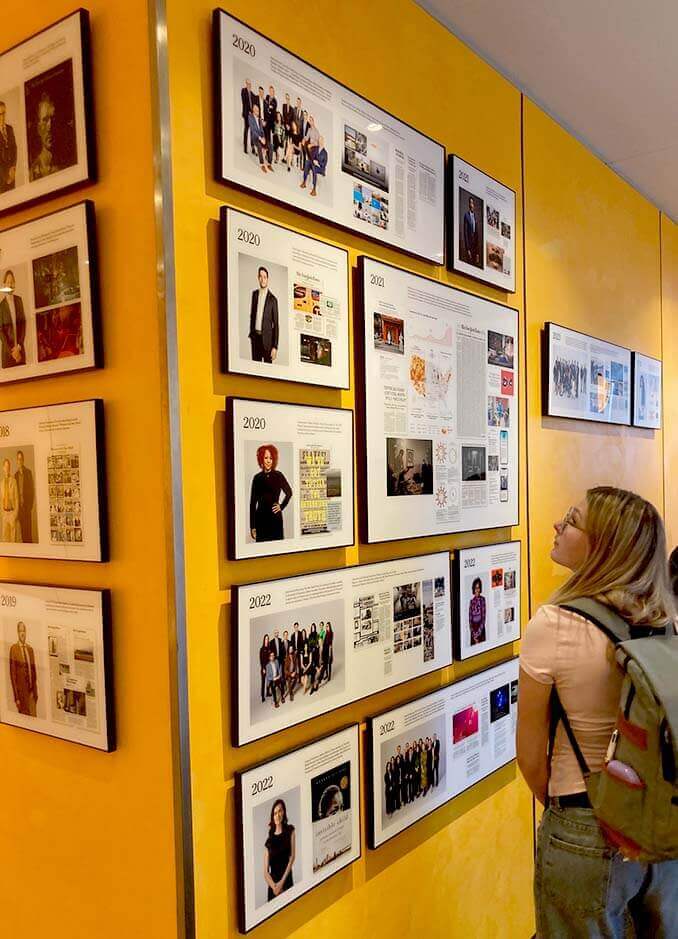
Fact Checking and Fighting Disinformation
Through the course, students learned to be more discerning readers as well, more prepared to combat misinformation online. Not only are students searching for established and reputable sources, they are taught to check sources against each other for gaps in information and contradictions. Allen provides a specific structure for students to produce their civics-related articles, including a template for outreach to potential interviewees, reinforcing professional email etiquette, standards for journalistic practices, and interview tips like, beginning every interview by establishing “the terms of the interview (on/off the record, background).” Through these tiers of support, students are able to produce thoroughly researched, and well-rounded news or feature stories that have the reward of personal investment and interest in their selected topics, connected to the larger world and society around them.
“I’ve noticed in my students that once they learn more about how the country works, they get more invested.” — Rachael Allen
Research that Resonates Beyond Requirements
The space to research the issues that matter to them was rewarding beyond academic requirements, it is work that resonates with their personal interests. “The Civics Journalism SLT was more than just a requirement to fulfill my service hours,” said Eliana Friedman ‘27. “It led me to learn about the political world and civic engagement, something I knew nothing about previously. Writing my article over the summer allowed me to do extensive research, specifically about my topic on the diverse community of people who have immigrated to the United States over different periods of time.”
Takeaways
Allen shared her wishes for students in their takeaways from the course. “For the students in the course, I hope they learned how to do community-based reporting—identifying the gaps in knowledge in our community through interviews and listening sessions—as well as how to write well-researched, well-sourced, and fact-checked articles. I believe that actually going through the process of journalism/writing stories is such a great way to learn how to spot misinformation and biased reporting as a reader—once you’ve done it yourself, you know what goes into solid journalism. For readers of the newspaper, I hope it offers a jumping off point to learn more about the election and civics. I’ve noticed in my students that once they learn more about how the country works, they get more invested.”
